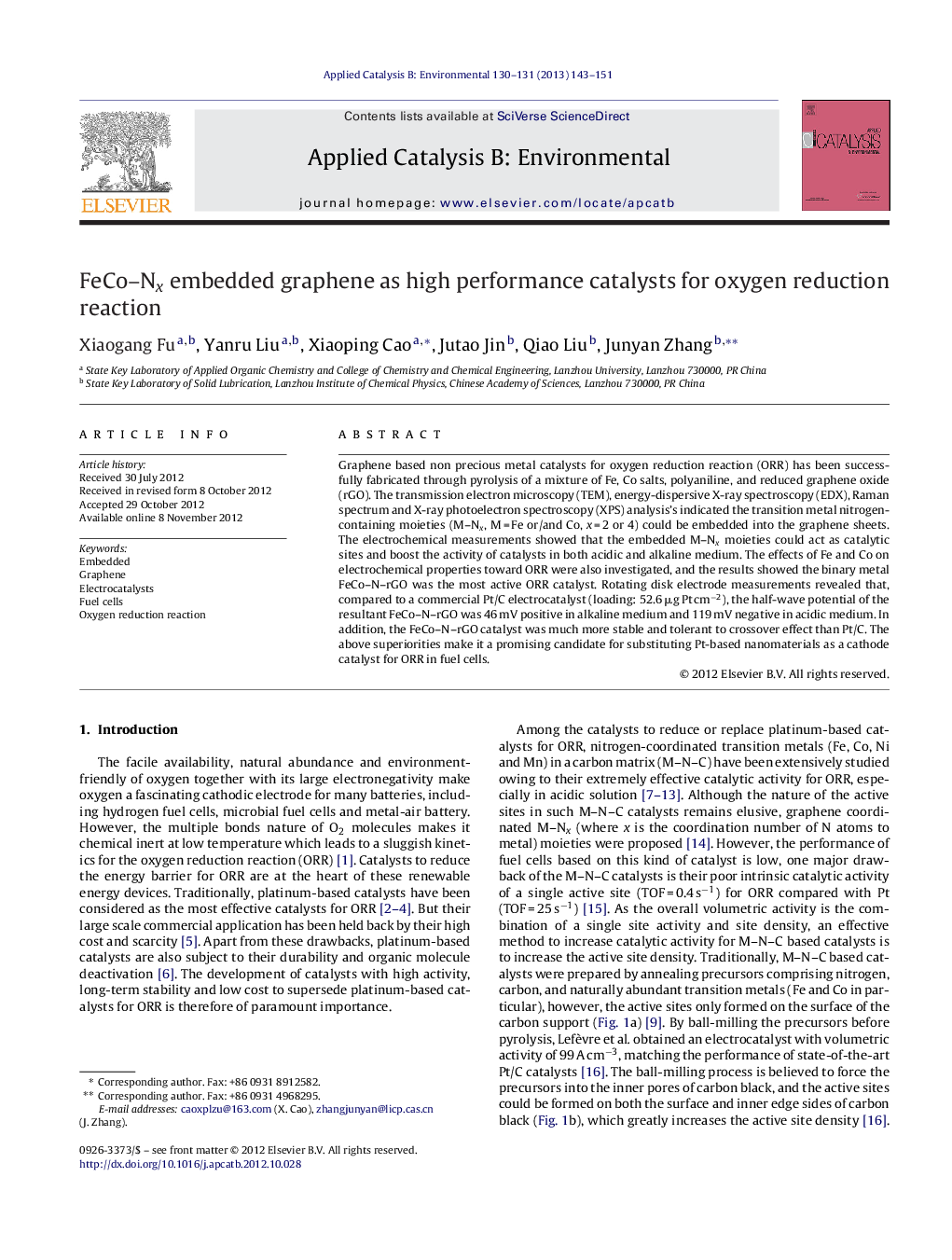| Article ID | Journal | Published Year | Pages | File Type |
|---|---|---|---|---|
| 45825 | Applied Catalysis B: Environmental | 2013 | 9 Pages |
Graphene based non precious metal catalysts for oxygen reduction reaction (ORR) has been successfully fabricated through pyrolysis of a mixture of Fe, Co salts, polyaniline, and reduced graphene oxide (rGO). The transmission electron microscopy (TEM), energy-dispersive X-ray spectroscopy (EDX), Raman spectrum and X-ray photoelectron spectroscopy (XPS) analysis's indicated the transition metal nitrogen-containing moieties (M–Nx, M = Fe or/and Co, x = 2 or 4) could be embedded into the graphene sheets. The electrochemical measurements showed that the embedded M–Nx moieties could act as catalytic sites and boost the activity of catalysts in both acidic and alkaline medium. The effects of Fe and Co on electrochemical properties toward ORR were also investigated, and the results showed the binary metal FeCo–N–rGO was the most active ORR catalyst. Rotating disk electrode measurements revealed that, compared to a commercial Pt/C electrocatalyst (loading: 52.6 μg Pt cm−2), the half-wave potential of the resultant FeCo–N–rGO was 46 mV positive in alkaline medium and 119 mV negative in acidic medium. In addition, the FeCo–N–rGO catalyst was much more stable and tolerant to crossover effect than Pt/C. The above superiorities make it a promising candidate for substituting Pt-based nanomaterials as a cathode catalyst for ORR in fuel cells.
Graphical abstractFigure optionsDownload full-size imageDownload as PowerPoint slideHighlights► Novel FeCo–Nx moieties embedded graphene was prepared. ► The catalyst shows high activity toward oxygen reduction reaction (ORR). ► The content of Fe–Nx moieties could affect ORR activity. ► Binary metal precursors assists embed FeCo–Nx moieties into graphene sheets.
